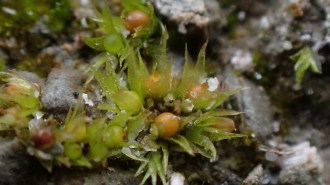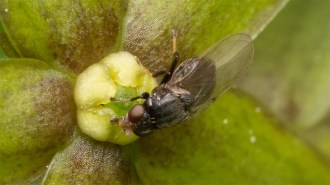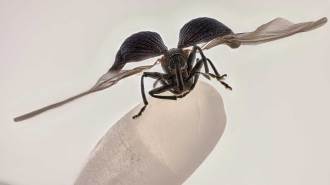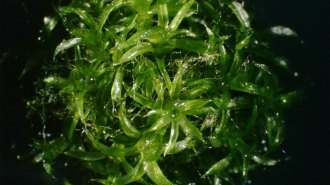Ah, that heart-lifting drag reduction and torsional stiffness. Or, put another way, “the particular liveliness of daffodils in gusty winds.”
Duke University biomechanics specialists Shelley A. Etnier and Steven Vogel in Durham, N.C., use both kinds of language in their analysis of daffodils and tulips. Daffodils indeed dance in the wind, the researchers note in the January American Journal Of Botany, citing previous work by William Shakespeare.
Etnier and Vogel studied blossoms in a wind tunnel and also measured the stems’ bending under the burden of various weights.
Tulip blooms sit centered on their stems, but the asymmetrical daffodils catch the wind like weathervanes, Etnier says. In a breeze, the daffodil twists to face downwind. The wind tunnel tests showed this reduces the flower’s drag by 30 percent.
The daffodil’s stem, elliptical in cross section, makes such acrobatics easy. Experiments with weights showed that the daffodil stem was “twistier” than the tulip’s circular support.
Studies, by Etnier and others, of lobster antennas, horsetail stems, and twiggy parts of more than 50 plant and animal species reveal a fairly consistent ratio of “twistiness to bendiness,” Etnier has found. Tulips conform to that pattern, but daffodils proved to have an unusually high “ratio of flexural to torsional stiffness.” Or to put it a little more poetically: Tulips don’t dance as the daffodils do.






